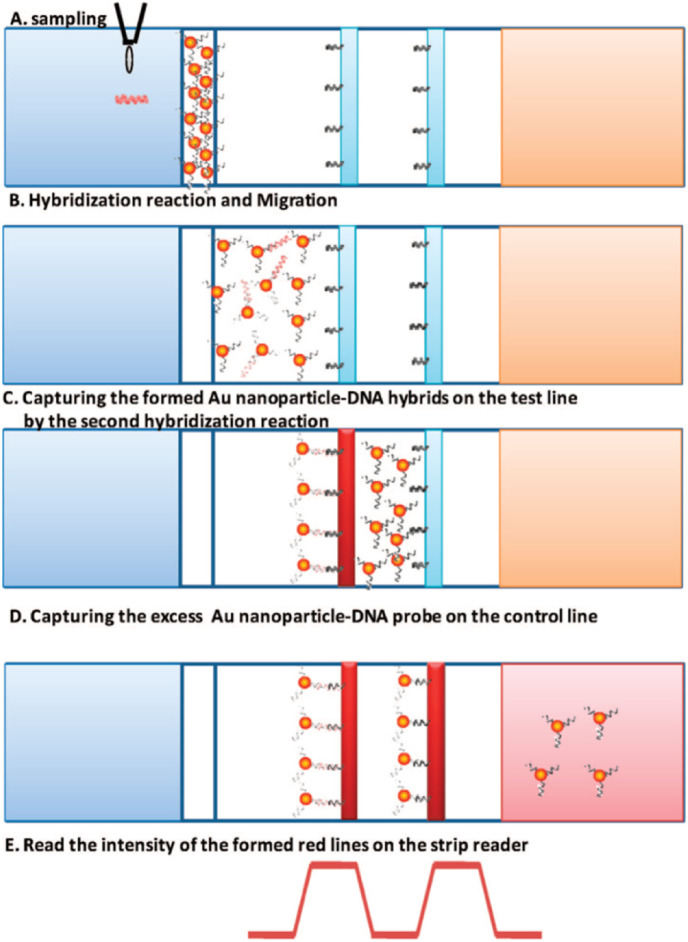Fig. 13.
Principles of measuring the disposable nucleic acid biosensor (DNAB).Reproduced from ref. [159] with the permission from ACS. Biosensors have two parts(i) a biorecognition interface which enables the selective detection of the analyte, and (ii) the transducer, which converts the recognition event into an electronic signal. The transducer is an electrode onto which DNA as the biorecognition species is immobilized. The two main approaches to the electrochemical transduction of DNA hybridization are: labeled methods and label-free methods. Labeled methods use redox active molecules that bind to DNA either in the minor groove, intercalating a planar aromatic ring between base pairs or by interaction with one of the bases. Label-free methods depend on either changes to the electrical characteristics of the DNA-modified interface upon hybridization or on the natural electroactivity of DNA. In the ideal case, a DNA biosensor would be able to discriminate complementary target DNA from DNA with a single base-pair mismatch without requiring amplification of the sample [160].

